Magnus Nilsson — The Chef of the Moment
The latest culinary rock star appropriately enough sports a mane of long blond hair, a scruffy beard, a too-cool aura and a laid-back cerebral nature.
If Rene Redzepi put Danish cooking on the map when his Noma restaurant in Copenhagen was named San Pelligrino’s “Best Restaurant” in the world for three years running, then Swedish sensation Magnus Nilsson of Fäviken Magasinet has only solidified the fact that Nordic cuisine’s moment has arrived with a wallop.
Nilsson, who previously cooked at three-Michelin starred L’Astrance in Paris and is a trained sommelier, took over Fäviken Magasinet in a remote, rural part of Sweden four years ago. The rather improbable restaurant is located in an isolated 24,000-acre hunting estate. Like Redzepi, Nilsson is all about cooking only with local ingredients. That may be fine in temperate California. It’s a whole ‘nother thing in the wilderness of northwestern Sweden, where the winters are beyond brutal.
Even so, Nilsson, who’s not yet 30 years old, has managed to turn this tiny, isolated 12-seat restaurant into not only one of the Top 50 in the world, but the most talked-about sensation these days in the culinary stratosphere.
With the launch of his first cookbook, “Fäviken” (Phaidon), he’s been bringing a taste of his innovative cuisine to the United States, including to Coi in San Francisco, where he cooked an extraordinary dinner with Chef-Proprietor Daniel Patterson on Saturday, to which I was fortunate to be invited as a guest.
The day before the dinner, Patterson and Nilsson foraged for wild edibles around the Bay Area. They also trekked to the farmers market, where Nilsson got a taste of his first Meyer lemons and fresh bay leaves.
In Sweden, Nilsson’s food makes use of much brining and curing — but beyond the realm of most imaginations. He’s experimented with dry-aging beef for an astounding six months until its exterior is black and foreboding, but its interior concentrated in deep, lush flavor. He doesn’t use citrus at his restaurant, only vinegars for their strong, clear hits of acidity. He even cooks with year-old leaves, using them to in fuse broths.
His style is almost the antidote to molecular gastronomy known for its flourishes of foam, spheres and liquid nitrogen clouds. Nilsson believes in cooking meat only over fire, not in vacuum-sealed bags immersed in water.
There’s a purity and primal quality to his food. It’s deceptively simple looking in presentation. But with one taste, you discover the depth it hides. It’s like nature — only improved upon. Or like a skilled makeup artist who can transform someone into a much more luminous version of themselves.
Patterson put it best when he described one of Nilsson’s dishes that night: a lone cauliflower floret presented with a small poof of whipped cream. Only it’s dark beer whipped cream, with a bitter, hoppy edge, and the cauliflower was cooked in vinegar and white soy until tender yet al dente in all the right places.
“His cooking looks very austere,” Patterson says. “But it’s very generous. It’s full of texture, temperature and taste.”
Dinner began with Nilsson’s signature flax seed crackers, organic in form and full of nutty, barley-like flavor. A dip, the color and consistency of Dijon mustard, tasted insanely of mussels.
Patterson parried with brown rice crisps, crunchy and light like shrimp chips, with a deep green kale spread.
House-made tofu coagulated with sea water had the creamy texture of fresh ricotta. Patterson served it with a cool gelee made with sea water and tomato water, its translucency belying its forceful flavors.
Next, the dish of the night: oysters in their shells dramatically presented on a bed of smoldering redwood branches and pine cones. Every time this course was presented to a table, the dining room turned as fragrant as a Christmas campfire. The oysters had a sensually soft texture. Their intoxicating juices had been reabsorbed back into the oysters in the cooking process, leaving them smoky and sweetly briny.
Decomposing leaves made an appearance at the dinner. A bowl of them, all gray-brown, hid tiny glistening, sweet white baby turnips.
Patterson brought out what looked like a prehistoric fossil. It was kohlrabi, covered in tobacco bark, and cooked for four hours, leaving it practically squirting juice like a just-picked apple when bit into.
Next, Nilsson’s dish of tender baby chanterelles with uncooked peas. Lovage salt, with its celery-like brightness, added a novel touch.
Tender, slightly chewy slivers of Monterey abalone got a punch from tangy, peppery nettle-dandelion salsa verde and spicy breadcrumbs.
Patterson is a fan of a little known heirloom lettuce, the stalks of which turn iridescent green when cooked and take on the texture of cucumber. Draped like a flower, the lettuce was served with a burnt hay vinaigrette that was speckled black, creating one gorgeous plate almost too beautiful to disturb.
Emich Ranch lamb was so rosy, it might have been mistaken for nearly raw. It was poached gently in olive oil, then briefly grilled over charcoal, leaving the fat-capped flesh meltingly tender.
Desserts at Coi are ethereal. Almond ice milk arrived looking like free-form soft-serve with puddles of almond milk. Sprouting almonds, juicy rather than full-on crunchy, were strewn over the top, as were drops of emerald-colored bay oil that added a taste of the forest.
That was followed by a small, light-as-air cube of passion fruit baba crowned with a sheet of chewy honeycomb. Unsweetened shiso syrup gave it a refreshing lift.
Finally, sugared raspberries to eat one by one with fingers while sipping a 2011 Cascina Ca’Rossa Brachetto, a light-bodied Italian wine that smelled like a bouquet of red roses and tasted like fresh red raspberries.
After traveling through the United States for three weeks to promote his book, Nilsson was headed home the next day to his wife and kids. He found himself inspired by many things on this first visit to the West Coast. But he’s not sure yet what that may lead to when he returns to the kitchen at Fäviken.
“It doesn’t work that way,” he says with a grin.
He should know. On the mysterious, meandering path to creativity, he’s already forged a unique direction to call his own.

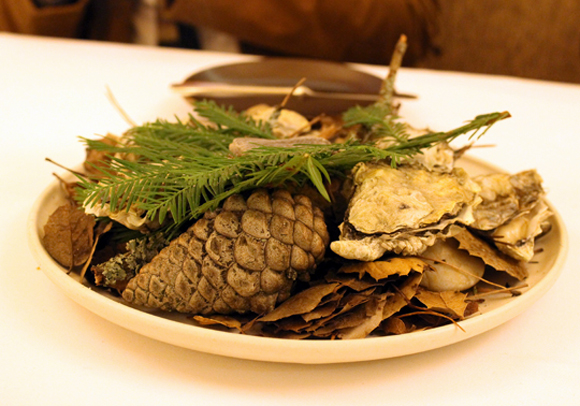
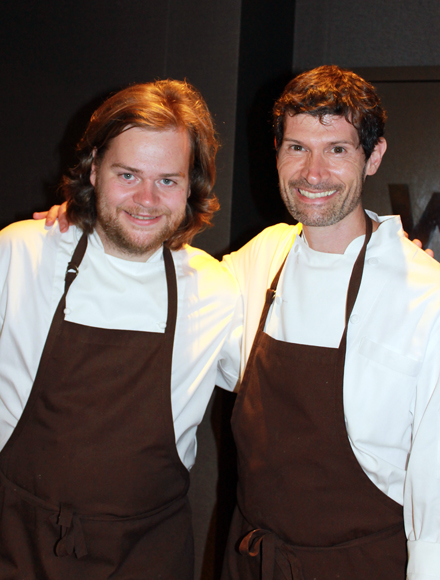


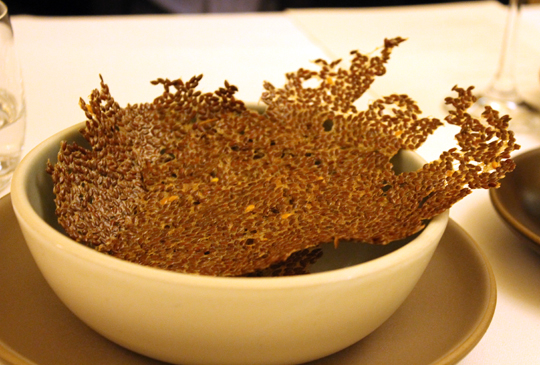
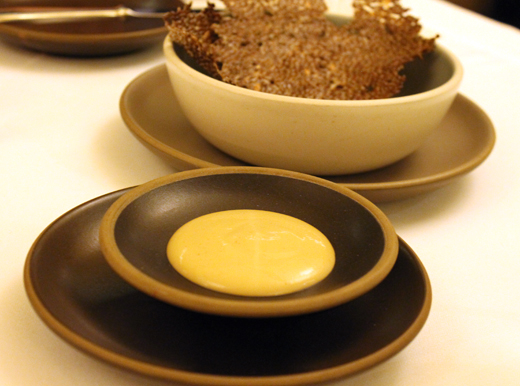
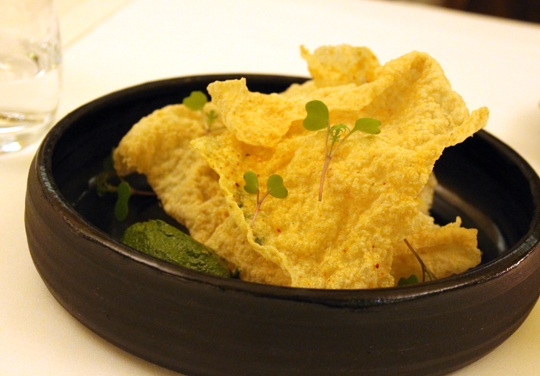
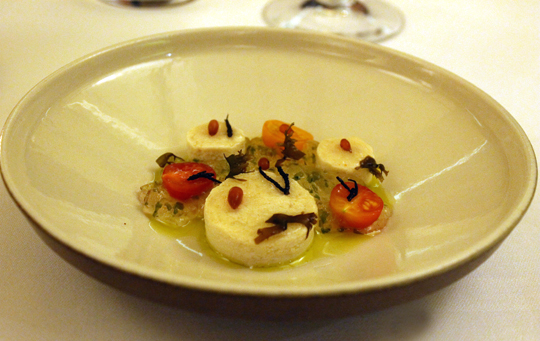

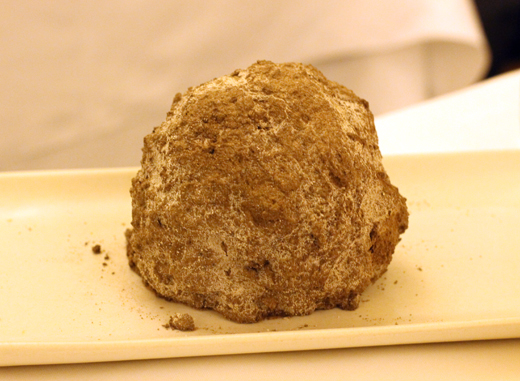

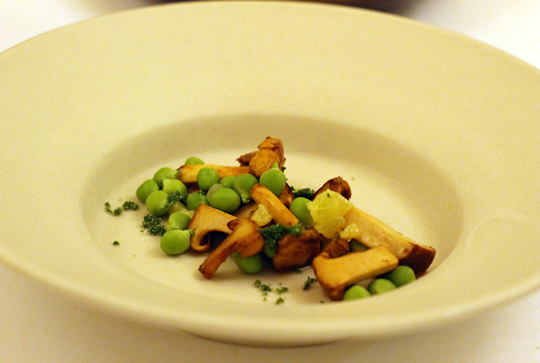
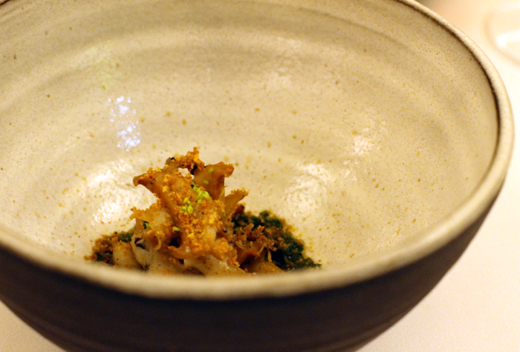
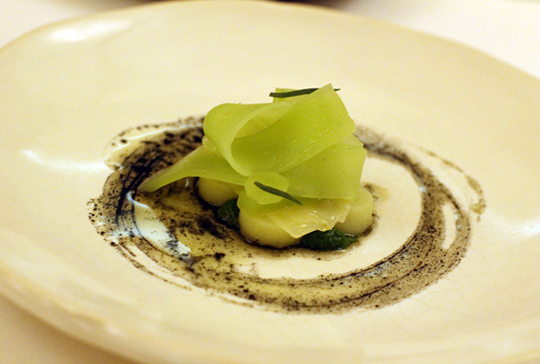

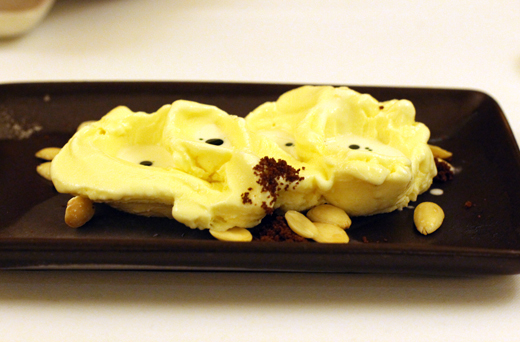
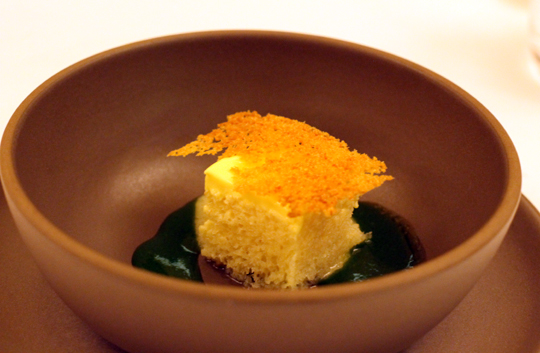

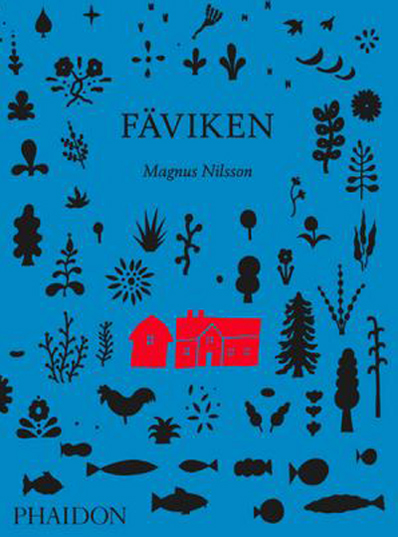
Very interesting food. An exceptional chef.
cheers,
Rosa
Amazing meal. I haven’t been to Coi in a while and need to go back. I’m sure it’s pretty much impossible to get into Nilsson’s place vs. El Bulli or Noma!
Wow, how lucky that you got to try Nilsson’s food without having to travel all the way to Copenhagen. The dishes look amazing and very experimental, but I have to say I’d probably be all frustrated if I had to pay money for it. Partly because I wouldn’t like a plate with dead leaves on it and the other part would be the small portion size (which was debated in a recent NYT article about the trend of tasting menus). I can see the genius of the chef and the complexity of the dishes, even in your photos and description, but I can also see where I would leave hungry and probably looking for a burger.
Ben: Actually, you’d be surprised. All those little dishes do add up. Plus, the food engages so many of the senses that you really do get filled up by it all. You leave satiated in a comfortable and mesmerizing way.
I agree this is some very interesting food! How awesome that you got to try his creations!
Wow, his dishes are very unique and fun! I would love to try them all. hm…that rosy lamb looks really good. Must be very tender.